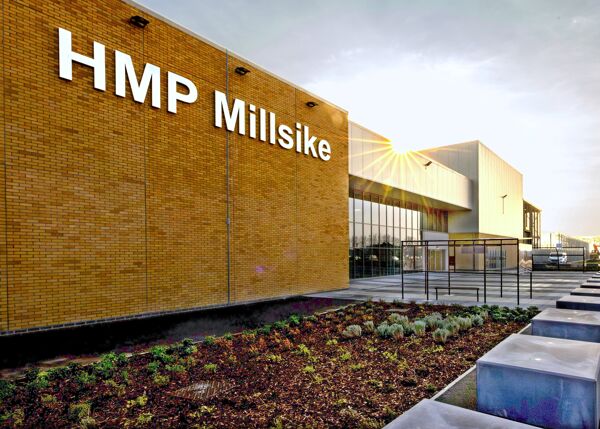
![]()
This case study is part of the Spotlight Campaign for Transport. To read more on how NEC Contract suite has been utilised in the Transport Spotlight, please click here.
 |
NEC Contractor of the Year 2017 See the other Winners here |
 |
NEC Project of the Year Highly Commended 2017 |
The NEC-procured Eastern Bay Link provides a vital new 1.2km dual carriageway through the Cardiff Docks area. It extends the Welsh capital’s A4232 southern perimeter road to the east, significantly reducing traffic congestion on existing urban roads.
The new link also increases accessibility from the east of Cardiff to the city’s major employment sites, reduces journey times for private and commercial road users and helps with economic regeneration. It enhances road safety and provides more opportunities for cycling and walking. Overall it improves the resilience of the strategic road network around Cardiff.
The new elevated road runs along the north side of Roath Dock, traversing existing dock roads, a private railway, a 1.5m diameter Victorian sewer and strategic gas pipes, fibre optic cables and electricity mains. It connects with the A4232 Queensgate roundabout and Ocean Way roundabout at each end via approach viaducts and embankments.
The Welsh government awarded the design and construction to a joint venture of Dawnus and Ferrovial Agroman on a two-stage, early-contractor-involvement basis in January 2015. The NEC3 Professional Services Contract (PSC) was adopted for preliminary design followed by the NEC3 Engineering and Construction Contract (ECC) Option C (target contract with activity schedule) for detailed design and construction.
The client engaged WSP as NEC project manager and the contractor subcontracted design elements to Capita and Cass Hayward, all using the NEC3 PSC.
Preliminary Design Changes
The original programme was for 27 weeks of preliminary design followed by 78 weeks of detailed design and construction. However, early in the design phase several issues were identified that seriously threatened the viability of scheme and risked leading to a 12 month delay.
The location of a 350m length of 1.5m diameter, 7m deep Victorian sewer that needed diverting could not be accurately located due to silting, and critical 132kV electricity cables could not be diverted until 6 months later than the programme required. Land acquisition was also delayed, further traffic modelling was required and the previously prepared environmental statement needed amending to accommodate advance works.
Under the NEC’s required ‘spirit of mutual trust and cooperation’ and incentives built into the ECC through Z clauses, the team worked together to resolve the issues as quickly and cost-effectively as possible.
Firstly, three new access shafts were built onto the sewer to remove silt and establish its exact position, from which it became clear there was no feasible diversionary route available within the site. The team then successfully proposed replacing part of the approach embankments with approach viaducts, allowing the existing sewer to remain in place. By careful siting of the approach viaduct piers, most other planned service diversions were also avoided. This approach also allowed for spanning over the 132kV electricity cables and other services, avoiding the need for diversion and their associated impact on programme
The £3.2 million cost of the approach viaducts was paid for using savings to statutory diversions using Z clauses in the contract designed to incentivise innovation. Dawnus Ferrovial Agroman project manager John Evans says, ‘Though the costs were theoretically covered by the Z clauses, it was a risky alternative and took a leap of faith on our part to proceed with it – something we probably would not have done without the collaborative ethos and risk management processes of NEC’.
Flexibility and Collaboration
Using the flexibility afforded in NEC, the client amended the ECC to allow preliminary and detailed design to overlap by 10 weeks, but on the basis that once enabling works were completed there was no guarantee that main construction works would proceed. The team also worked pro-actively with local landowners to deliver tangible improvements to their assets and speed up the land acquisition process.
James Evans, project manager for WSP says, ‘I have been very pleased with the flexible proactive approach the joint venture team adopted in redesigning the scheme to deal with issues surrounding services and access. Following successful completion of the enabling works, an excellent start was made on the main construction works.’
The contract was reviewed to check that all remaining service diversions could be carried out under a non-statutory environmental assessment. Detailed design of the roundabouts was separated from the main link while a new traffic model was developed, and the environmental statement was revised. The main construction was delayed until March 2016.
According to John Evans, ‘The team worked closely during the preliminary design to overcome major issues by working flexibly, and this approach continued in the detailed design phase and throughout the rest of construction. Without NEC’s flexibility and obligation to work in a spirt of mutual trust and cooperation, it would have been very difficult – if not impossible – for the project team to reinvest in a completely new design, allow such an overlap in design and construction, and still complete on time and budget.’
Rhys Griffith, project manager for the Welsh Government, says, ‘The challenges and solutions delivered on this scheme have kept us busy for the last two years. It is a story of the benefits of early contractor involvement and collaborative working at its best.
Benefits of Using NEC
- The NEC obligation to act in a ‘spirit of mutual trust and cooperation’ fostered a collaborative, problem-solving approach to overcome the major constraints identified during the preliminary design stage.
- Flexibility of the NEC contract allowed significant redesign, overlapping preliminary and detailed design phases, separation of detailed design elements and a later construction start while still ensuring completion on time and within budget.
- NEC Z clauses incentivised the contractor to reduce £6.3 million of statutory diversion costs, which in turn made the £3.2 million cost of the alternative design viable.




